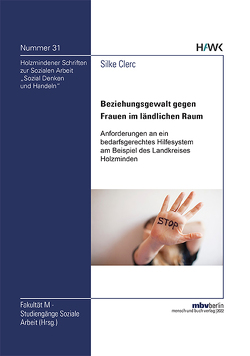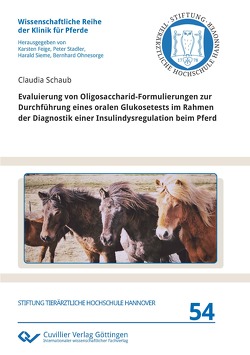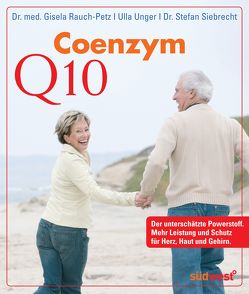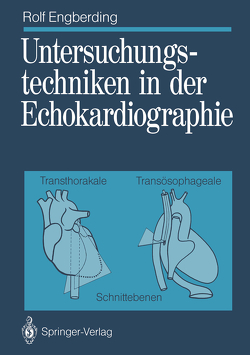Auswirkungen des Equinen Metabolischen Syndroms auf die kardiale und autonome Funktion sowie den arteriellen Blutdruck des Pferdes
Sarah Patricia Gisela Liertz
Effects of the Equine Metabolic Syndrome on cardiac and autonomic function and also on the arterial blood pressure in the horse
Decreased insulin sensitivity, obesity or abnormal fat distribution and a predisposition for laminitis often occur in association and are summarised as equine metabolic syndrome (EMS). The term follows the human metabolic syndrome that also comprises factors of obesity and insulin dysregulation. Furthermore, it is characterised by arterial hypertension, cardiac and autonomic dysfunction. The risk of heart diseases of the affected individuals is amplified.
The aim of this thesis was to investigate whether also EMS has these effects on arterial blood pressure, cardiac or autonomic function in the horse.
Myocardial velocity and deformation were investigated in order to screen the cardiac function. Sensitive echocardiographic techniques are tissue velocity imaging (TVI) and two-dimensional speckle tracking (STE). Since the activity of the autonomic nervous system influences the excitation rate of the cardiac sinus node, an electrocardiogram could therefore be used to analyse the heart rate variability (HRV) and indirectly the autonomic function. Blood pressure was evaluated non-invasively at the coccygeal artery by oscillometry.
In the first examination the blood pressure, cardiac and autonomic function of 32 horses with EMS were analysed. The data was based on examination results from patients presented to the Equine Clinic, FU Berlin.
The results demonstrated that the severity of insulin resistance (IR) could be affected by management and housing conditions. The degree of IR in horses exercised under controlled circumstances was significantly lower than in those which were not exercised (p = 0.002). Nonrestricted feeding was accompanied by moderate or severe insulin resistance (p < 0.001).
The investigation by tissue velocity imaging showed a decreased diastolic cardiac function. Normally, an active relaxation of the ventricle occurs within early diastole. Subsequently, the atrium contracts which results in further filling and passive myocardial stretching of the ventricle. However, the horses with EMS showed a reduced early diastolic relaxation of the ventricular myocardium, which suggests a decreased elasticity. In the spectral doppler mode (PWTVI) the myocardial velocities in early diastole (E) of the left ventricle were inferior in comparison to healthy populations (IVS: p = 0.009, LW: p < 0.001). The resulting diastolic velocity relation was decreased either (E/A; IVS and LW: p < 0.001). This was confirmed by the color doppler mode (C-TVI: E; IVS: p = 0.004, LW: p = 0.010). Similar findings have been observed in human metabolic syndrome. The findings resemble those in horses with clinical obvious myocarditis and myodegenerative cardiomyopathy.
The assessment of the deformation done by speckle tracking-echocardigraphy (STE) provided no distinct results. In diastole, an increase of the radial function in the lateral segment (p = 0.003) as well as in the overall mean were detected (p = 0.022), while a decrease in the anterioseptal segment confirmed the reduced function indicated by TVI (p = 0.002). During the systole, an increase of contraction for the circumferential axis of motion was proved (Ant and Lat: p < 0.001, Post: p = 0.001, mean: p = 0.002). On the contrary, the radial wall thickening was decreased segmentally (Inf and Sept: p = 0.001), but altogether proceeded faster (mean: p = 0.003). Without measurements in the longitudinal axis of motion especially the radial deformation could not be evaluated sufficiently because a compensatory deformation between the radial and longitudinal direction of movement is supposed.
The cardiac function was related to the characteristics of various factors. Older horses had a reduced diastolic function compared to younger ones assessed by TVI. This led to a higher late diastolic peak velocity (A; PW_LW: p = 0.012, C_LW: p < 0.001, C_IVS: p = 0.001) and decreased diastolic relation (E/A; PW_LW: p = 0.001, PW_IVS: p = 0.031, C_LW and C_IVS: p < 0.001). This phenomenon is well known in human medicine and has already been described in horses. A more rigid myocard and as a consequence inferior relaxation are suspected to be the cause.
The severity of regional adiposity was associated with myocardial velocities. Along with a severe cresty neck score (CNS) the myocardial force development in isovolemic contraction was decreased (PW_LW_IVC: p = 0.002, C_IVS_IVC: 0.023). Furthermore, an alteration of systolic wall excursion (PW_LW_S: p = 0.030, PW_LW_IVC: p = 0.038) also the diastolic motion was impaired if the horse expressed more than two out of four abnormal fat deposits. Similar to old horses‘ findings, the late diastolic myocardial velocity was increased (PW_LW_A: p = 0.035) followed by a decreased diastolic velocity relation (C_LW_E/A: p = 0.007). This was rated as a compensatory mechanism that ensures a sufficient filling of the ventricle even if the active relaxation is impaired. Although a cresty neck is supposed to have the most severe metabolic effect, its influence on cardiac function was subordinated in the presented study. A greater coherence existed between cardiac function and regional adiposity as a whole which led to the presumption other deposits might have a greater effect. Laminitis and insulin resistance were associated with early diastolic deformation. Thinning of the myocardium was accelerated if the horses had laminitis (p = 0.004 to 0.047) or a severe insulin resistance (p = 0.005 to 0.040). This could be ascribed to compensation of longitudinal deformational losses and should be clarified by further examinations.
The analysis of heart rate variability in comparison to healthy horses showed a decreased overall variability (SDNN: p < 0.001) with reduced influence of the parasympathetic portion (HF: p = 0.049). These results also overlapped with results of human studies and indicated an increased stress level in cases affected by EMS. Nevertheless, characteristics for neuropathies were not detected. As already pointed out for cardiac function a coherence to age existed. Old horses showed a shift of autonomic relation towards sympathetic predominance (LF/HF, LF, HF je p = 0.014). The opposite pertained for obese animals that had a decreased overall variability (SDNN: p = 0.001) with stronger vagal influence (LF/HF p = 0.049). This was rated as an age-dependent distortion. The obese horses were younger than the normal-conditioned ones (p = 0.046).
Heart rate (p = 0.007) and peripheral pulse frequency (p = 0.012) of individuals with metabolic syndrome were increased compared to healthy populations. This has already been observed in humans and horses. In humans, an association with particular factors of the syndrome was made which was also possible in this study. With a severe EMS-Score, heart rate (p = 0.048) and pulse frequency (p = 0.007) were increased. Horses with severe insulin resistance (p = 0.024) as well as obese ones (p = 0.047) had increased heart rates. The pulse frequency of animals with laminitis was increased either (p = 0.020).
Diastolic (DAP: p = 0.026) and mean arterial blood pressure (MAP: p = 0.047) were increased in diseased horses. These results promoted observations of arterial hypertension in horses with EMS, obesity and laminitis. Seasonal fluctuations could be confirmed. Higher systolic pressures were obtained during the summer months (SAP: p = 0.038).
An interventional phase followed. All horse owners were educated to change husbandry, feeding and training of their animals in order to lose weight or achieve a reduction in abnormal fat deposits. Fourteen out of thirty-two horses could be re-examined at a follow-up three to six months later. Induced by the interventional measures, the detectable insulin resistance of five horses was suspended.
In these fourteen horses, besides the persisting reduction of the early diastolic relaxation, a compensatory increase of atrial contraction was apparent. This was indicated by accelerated myocardial velocities followed by reduced E/A-ratios in the interventricular septum with the PW-TVI (A: p = 0.006, E/A: p = 0.018) as well as with the C-TVI (A: p = 0.025, E/A: p = 0.005). The results indicated a worsening of the diastolic function.
The effect of regional adiposity was outstanding. If it was improved the late diastolic interventricular velocity would decrease (p = 0.001) while the E/A-ratio would increased compared to the first examination (p = 0.048). In the opposite, if there was no improvement in regional adiposity the velocity would increase (p = 0.001) and the relation of E to A would decrease (p = 0.008). A progression of diastolic dysfunction indicated by increased late diastolic velocities and reduced diastolic velocity ratios was observed also in cases where a failure of improvements of the overall management (A: p = 0.001, E/A: p = 0.023), the training (A: p = 0.001, E/A: p = 0.043) or of the husbandry occured (A: p = 0.002, E/A: p = 0.011). Regarding the EMS-status altered values were seen without improvement of CNS (A: p = 0.004, E/A: p = 0.045), overall obesity (A: p < 0.001, E/A: p = 0.017), body weight (A: p = 0.029, E/A: p = 0.028) and insulin resistance (A: p = 0.050, E/A: p = 0.012).
The autonomic function and arterial blood pressures remained unchanged.
In conclusion, it was possible to prove diastolic dysfunction in the examined horses with EMS. Furthermore, they exhibited a decreased heart rate variability with reduced parasympathetic influence on sinus rhythm. Additionally, higher blood pressures existed. Cardiac findings proceeded if the implementation of interventional steps was too lax and the EMS-status failed to improve. Nevertheless, an optimisation of horse-keeping conditions and EMS-status could not lead to a correction of these findings. The reason could be the short interval between the examinations. Future studies could investigate if extended intervals and strictly controlled interventional measures are able to improve the cardiac function in an echocardiographic visible manner as already described in human medicine.






















































